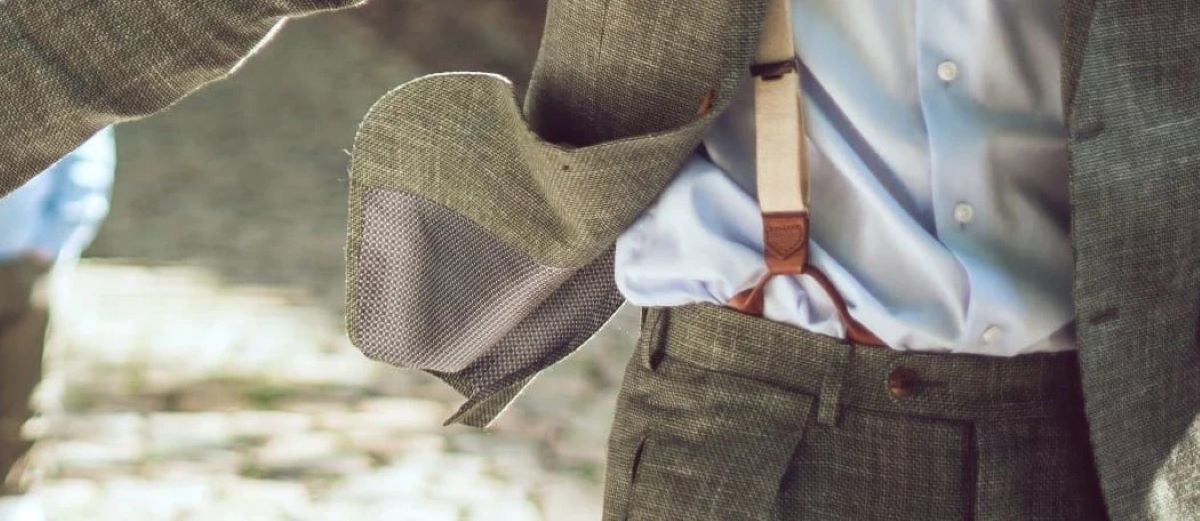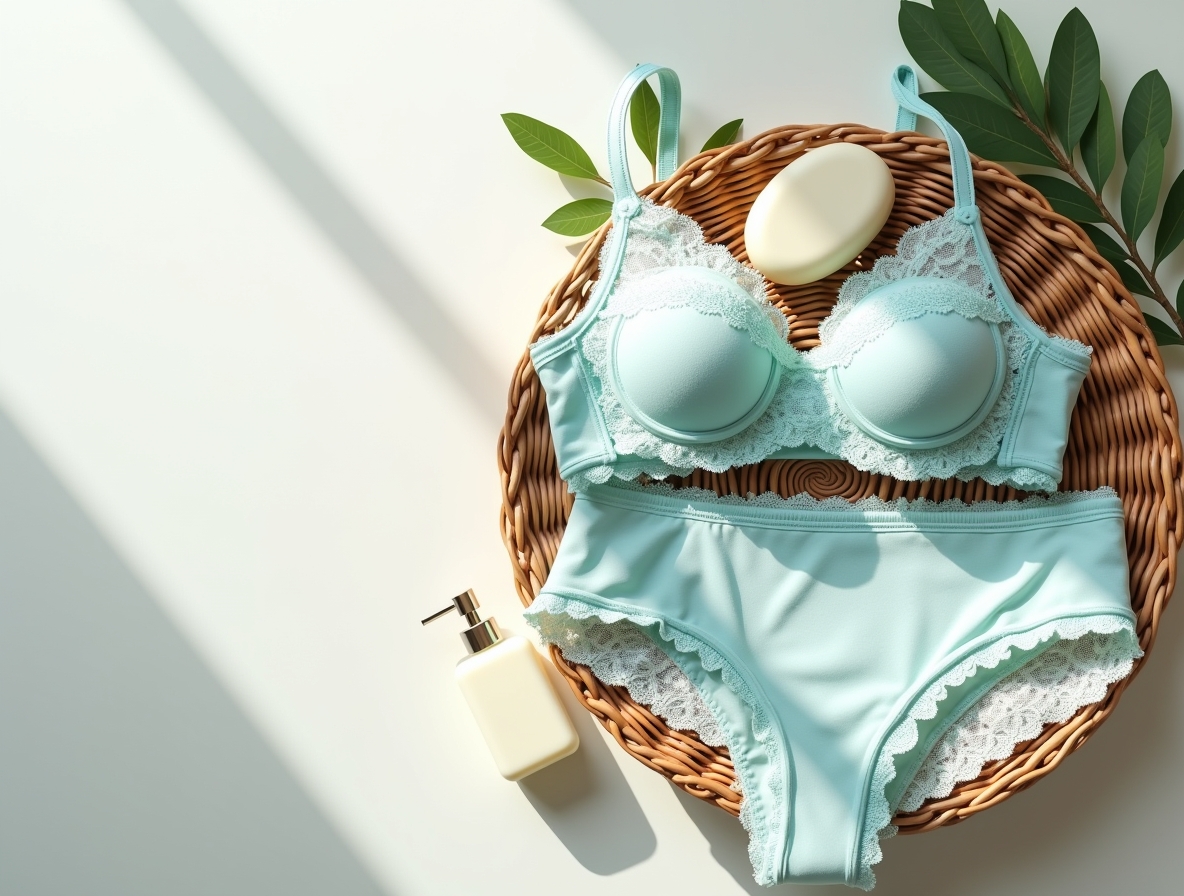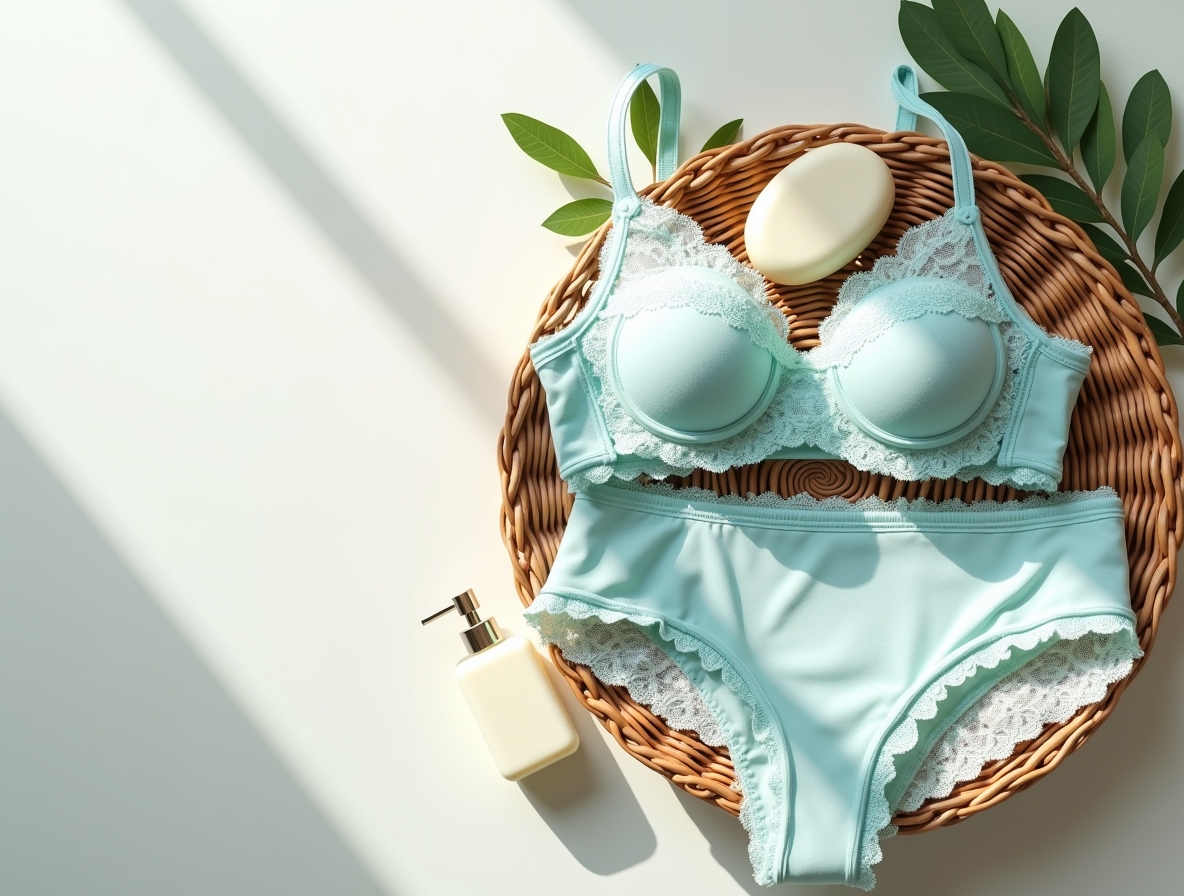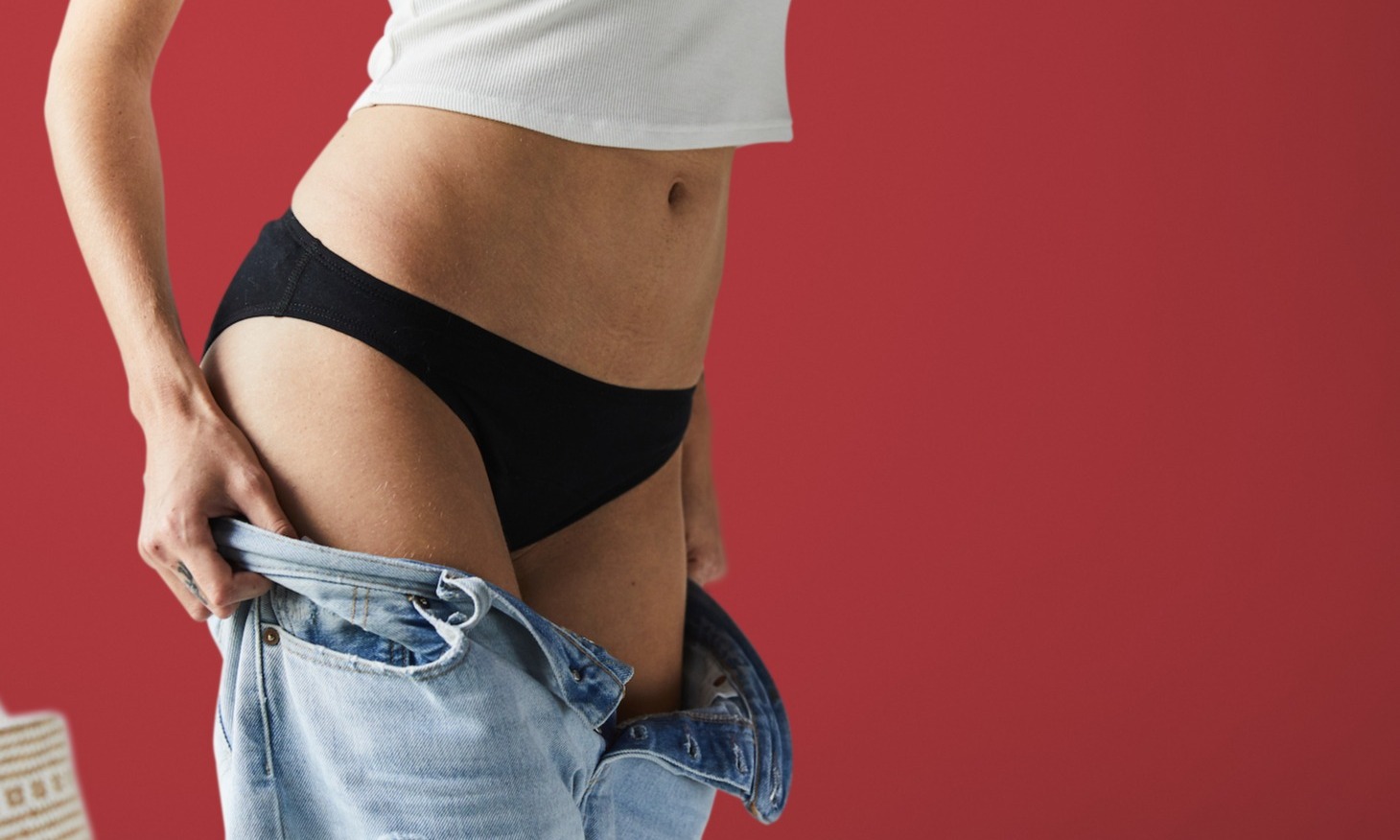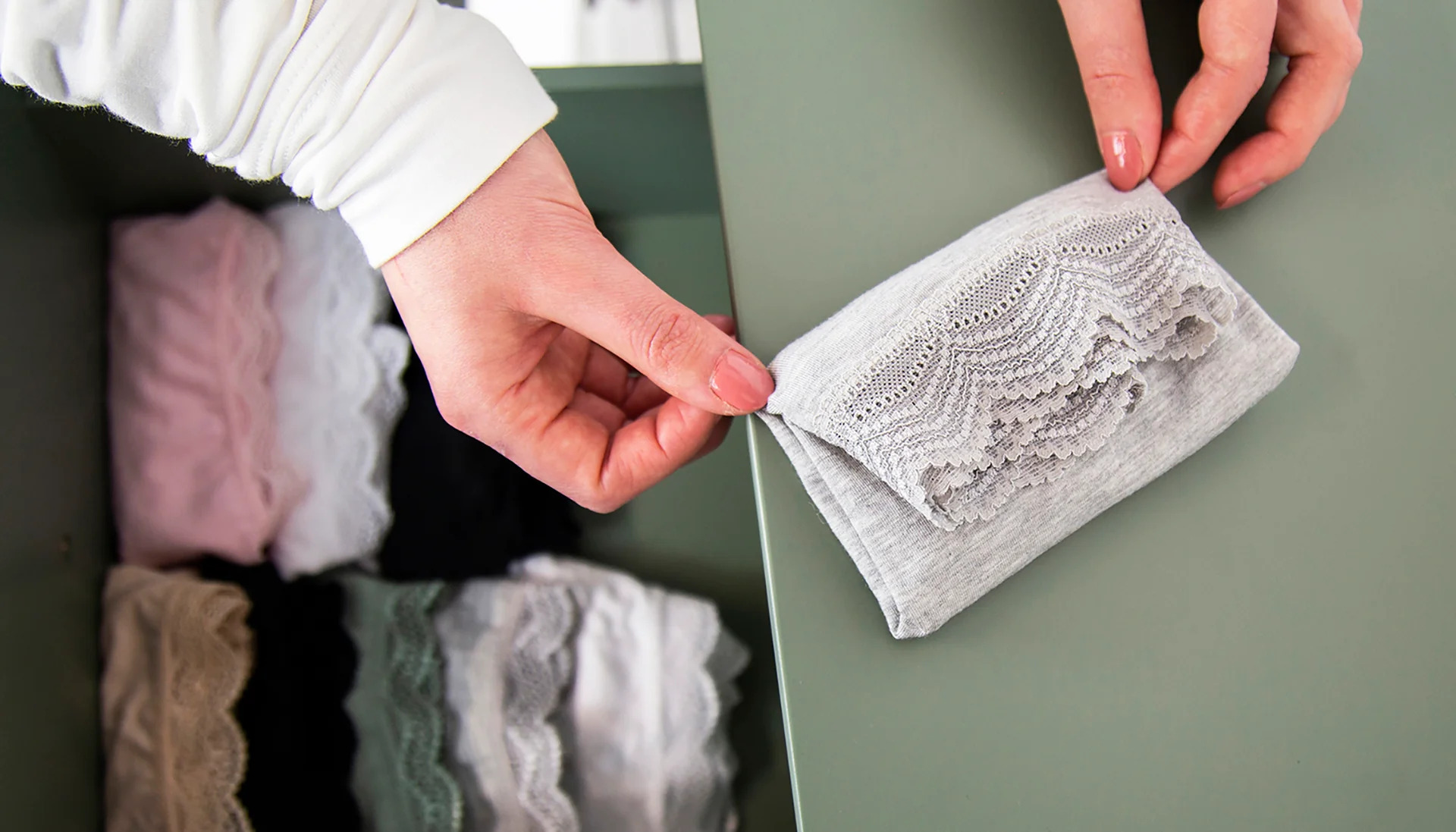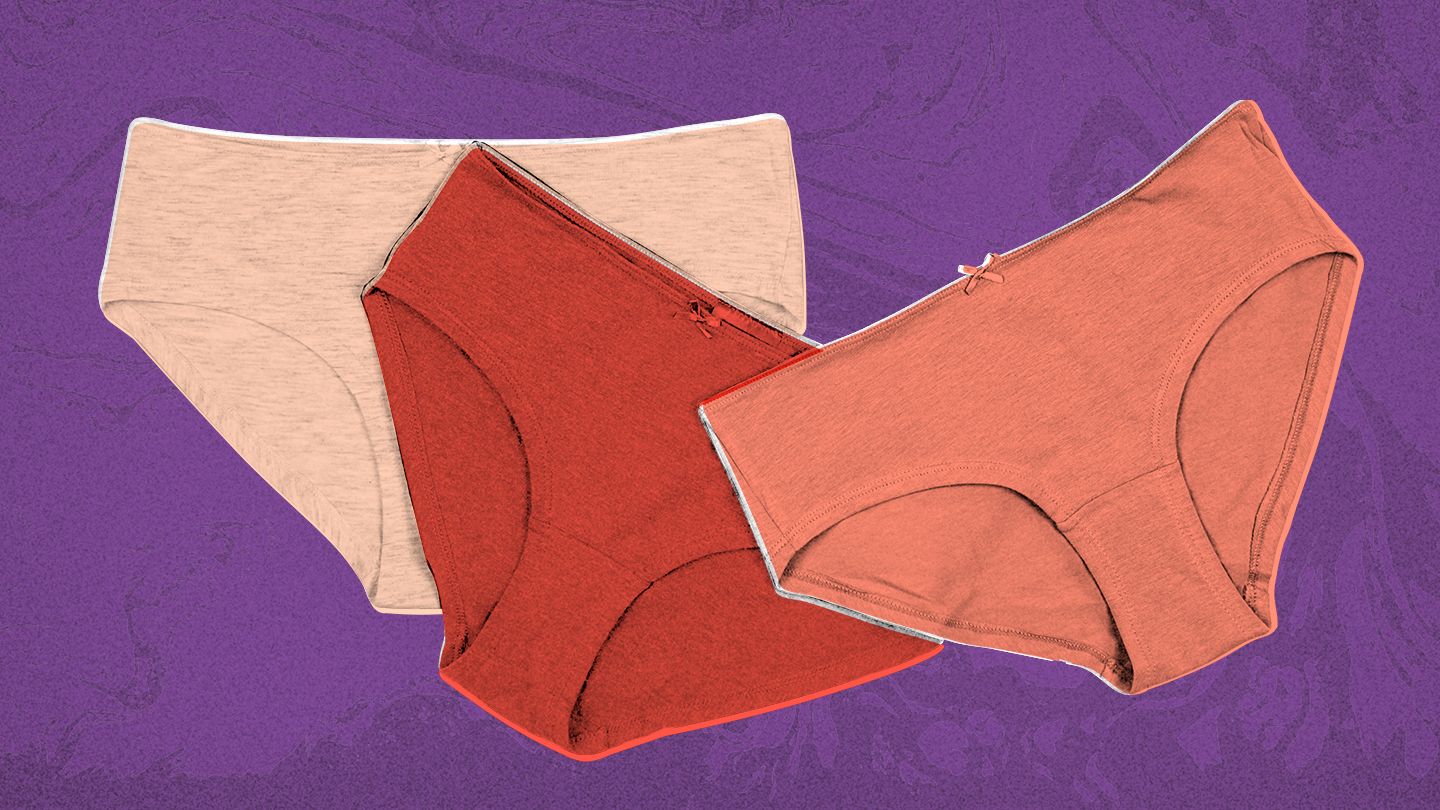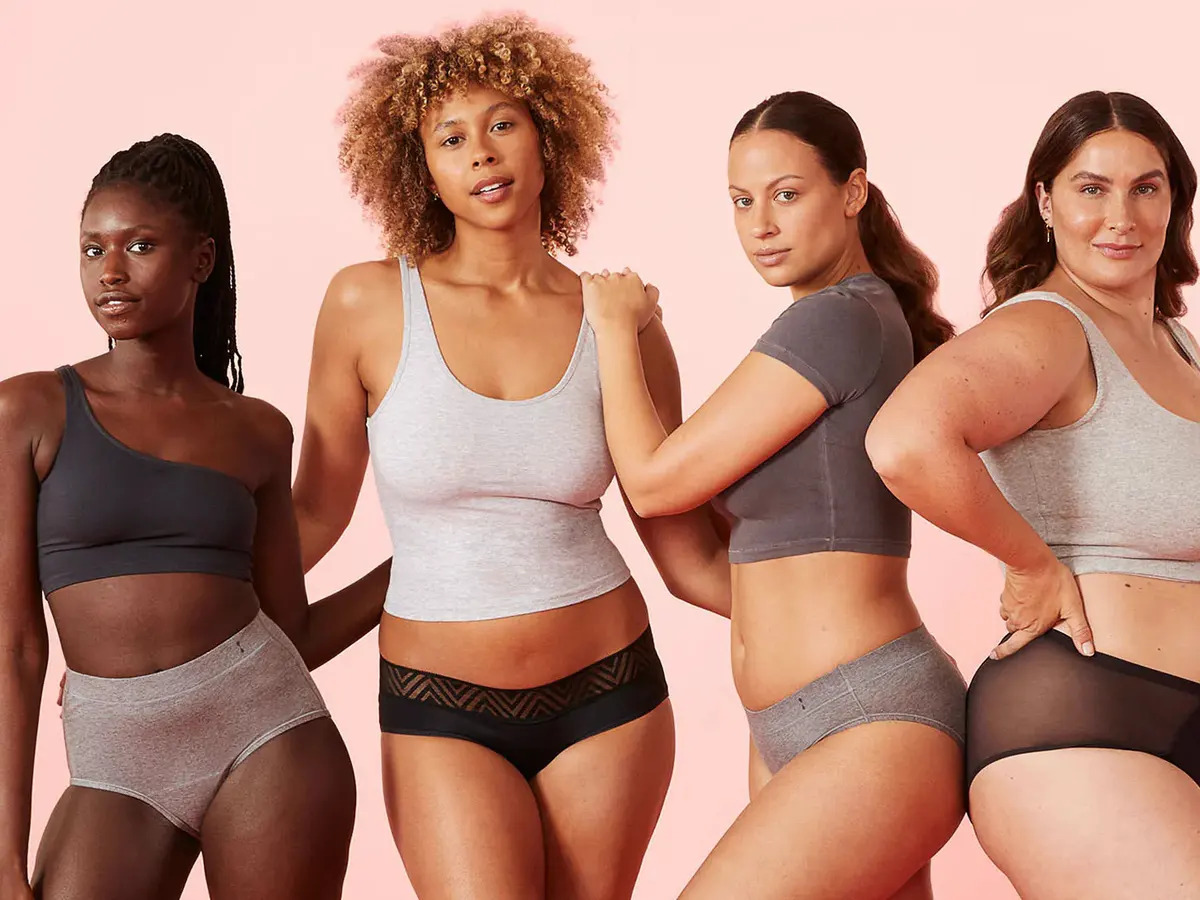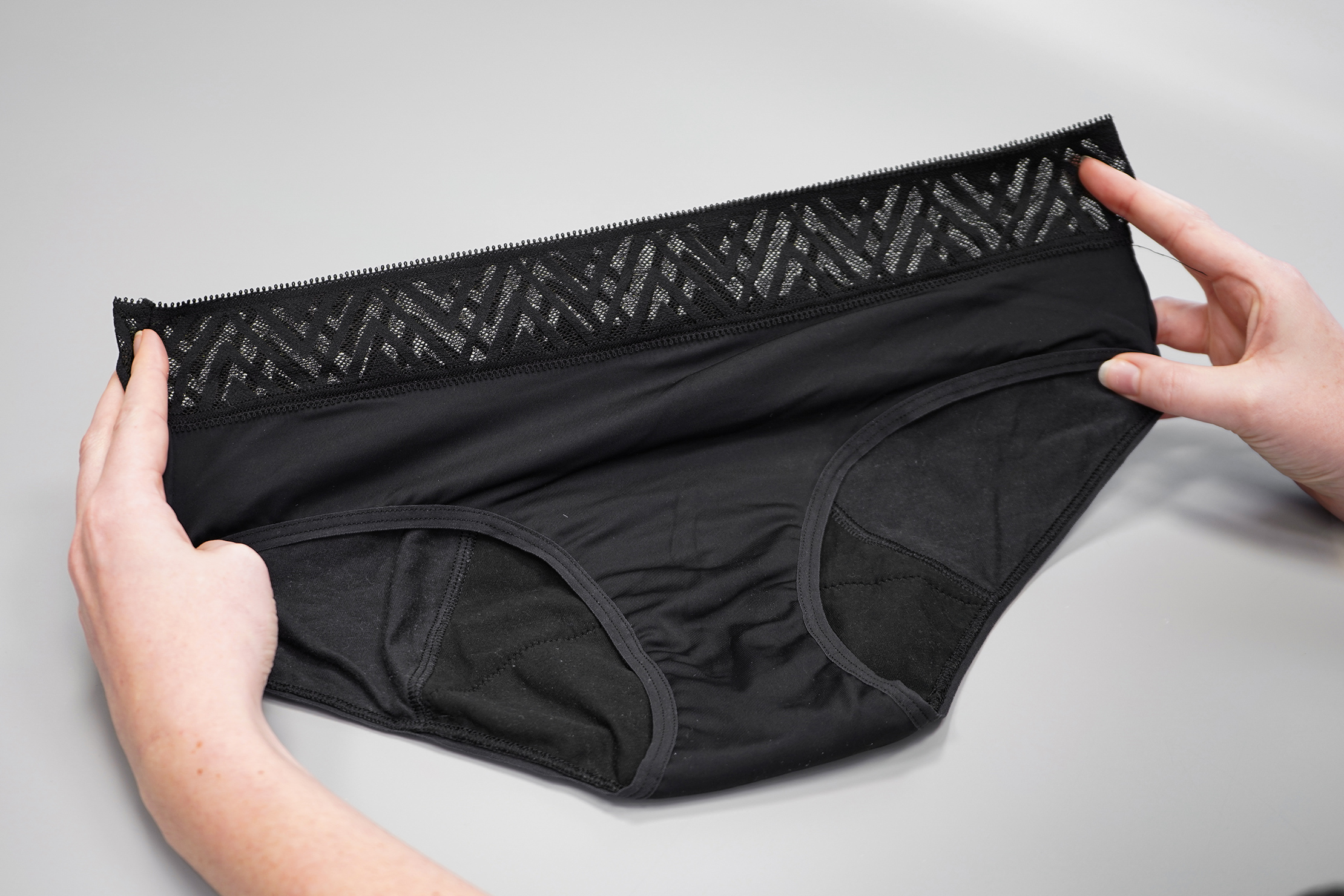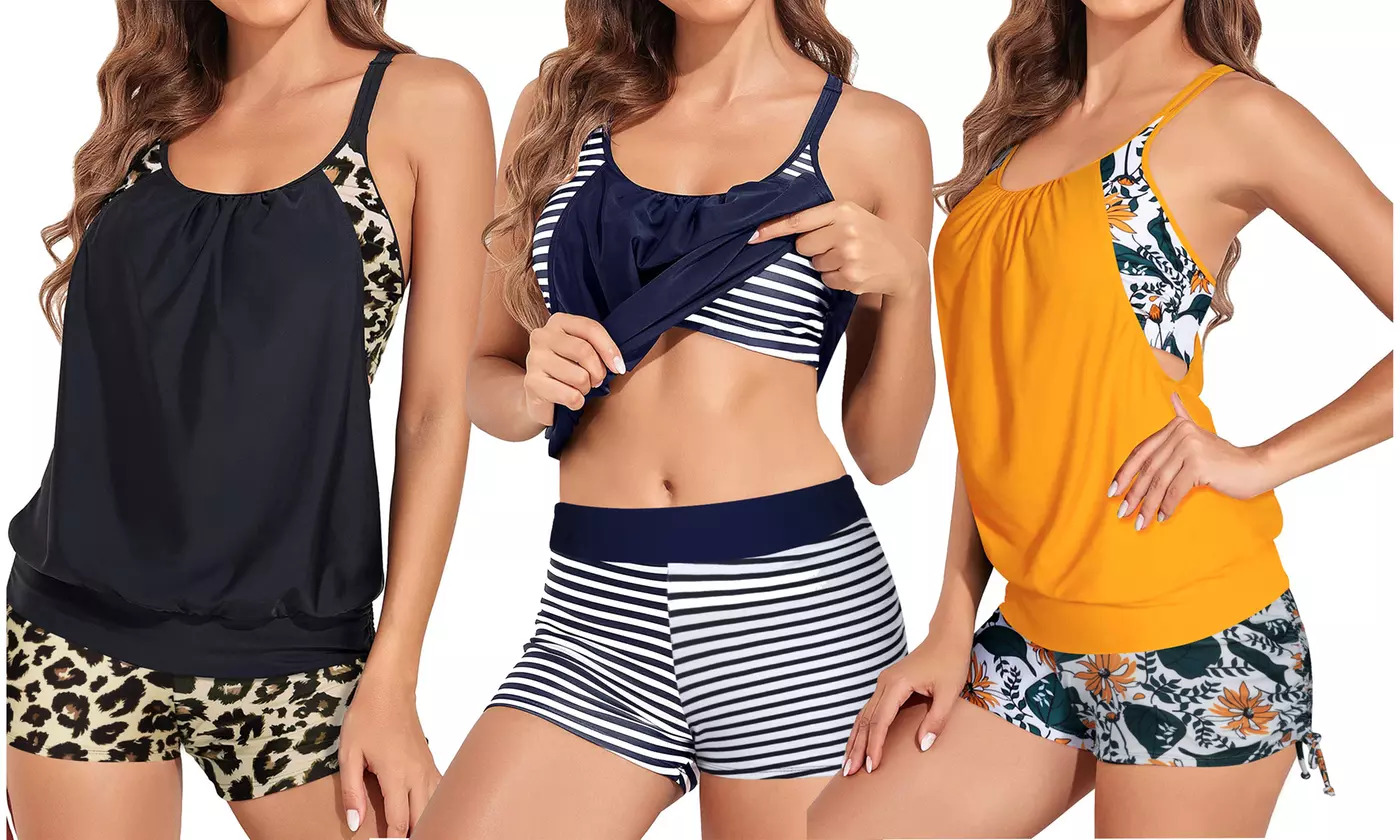Home>Buying Guides>How Do Period Panties Work?
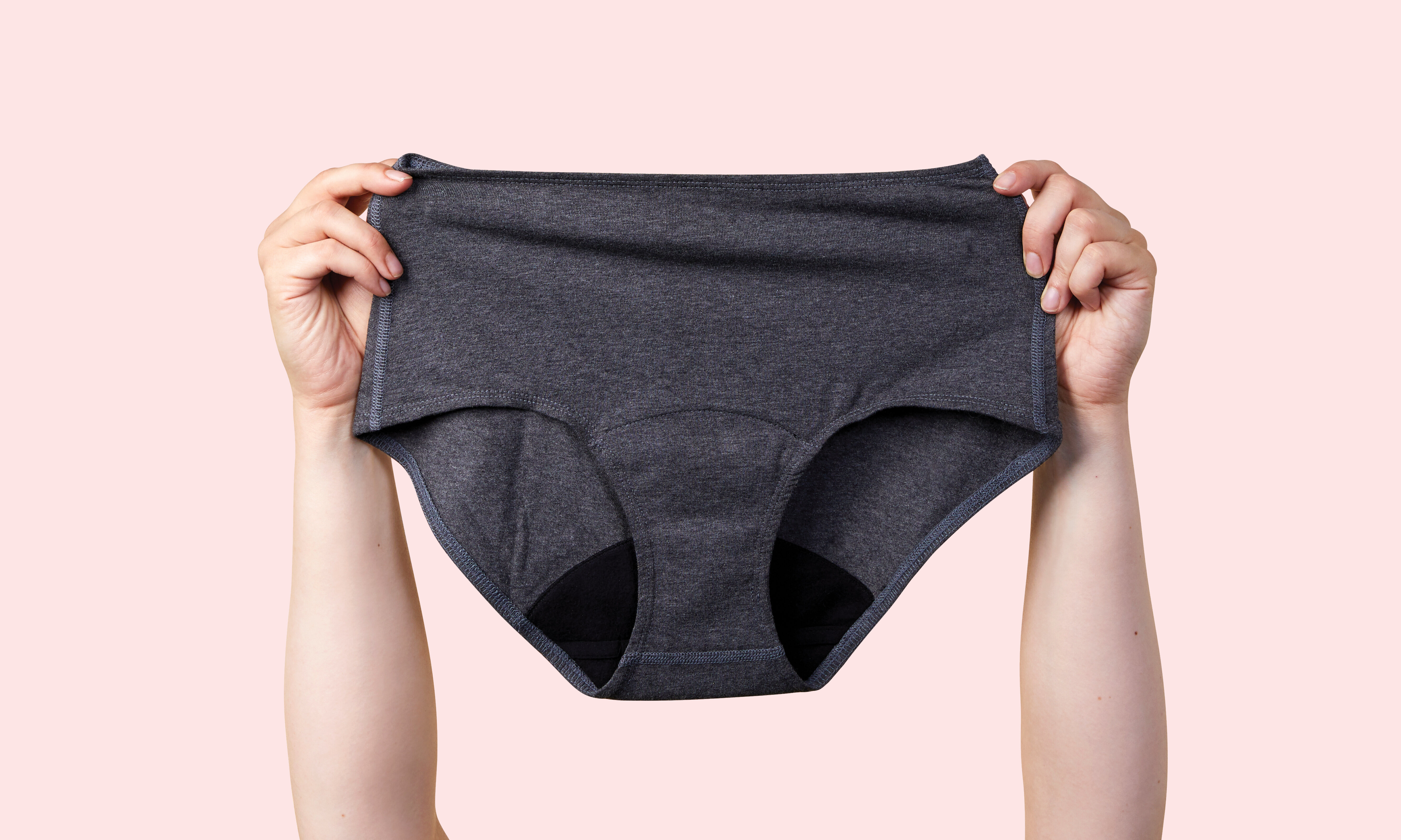

Buying Guides
How Do Period Panties Work?
Modified: September 23, 2023
Learn how period panties work and discover the ultimate solution for women during their menstrual cycle. Stay comfortable and leak-free with these innovative undergarments.
(Many of the links in this article redirect to a specific reviewed product. Your purchase of these products through affiliate links helps to generate commission for Under-tec.com, at no extra cost. Learn more)
Table of Contents
- How Do Period Panties Work?
- Introduction
- What are Period Panties?
- Absorbent Layers
- Breathability and Moisture-wicking
- Odor Control
- Leak-proof Design
- Types of Period Panties
- How to Use Period Panties
- Benefits of Period Panties
- Disadvantages of Period Panties
- Factors to Consider when Choosing Period Panties
- Conclusion
How Do Period Panties Work?
Period panties, also known as menstrual underwear, are specially designed undergarments that are designed to provide protection and comfort during menstruation. They are a great alternative to traditional menstrual products like pads and tampons. But how exactly do period panties work? Let’s take a closer look.
One of the key features of period panties is their absorbent layers. These layers are strategically placed in the crotch area of the panties and are made from highly absorbent materials. They are designed to trap and hold menstrual fluid, keeping you dry and leak-free. The absorbency level can vary depending on the brand and style of the period panties, so it’s important to choose a pair that suits your individual needs.
Another important aspect of period panties is their breathability and moisture-wicking properties. Unlike some traditional menstrual products that can trap moisture and cause discomfort, period panties are made from breathable fabrics that allow air circulation, preventing sweat and odor build-up in the vaginal area. The moisture-wicking properties of these panties also help to keep you dry and comfortable throughout the day.
Period panties are also designed with leak-proof technology. They have a waterproof layer or coating that prevents any leakage onto your clothes or bedding, giving you peace of mind and the freedom to move around without worries. The leak-proof design varies between brands, so it’s worth exploring different options to find one that suits your needs.
When it comes to using period panties, the process is quite simple. Just like regular underwear, you wear them as you would any other pair of panties. Depending on your flow, you can wear them alone or as a backup to other menstrual products. Once you’re done wearing them, you simply wash them according to the manufacturer’s instructions.
Now that you understand how period panties work, let’s explore the benefits and disadvantages of using them.
Introduction
Menstruation is a natural and recurring process that women experience throughout their reproductive years. During this time, it is essential to have access to effective and comfortable menstrual products to ensure a hassle-free experience. One such innovative option that has gained popularity in recent years is period panties.
Period panties, also known as menstrual underwear, are designed to provide women with a reliable and eco-friendly alternative to traditional menstrual products like pads and tampons. They are specially designed undergarments that offer both comfort and protection during menstruation. These panties are gaining traction among women of all ages due to their convenience, effectiveness, and sustainability.
When it comes to understanding the benefits and functionality of period panties, it is important to familiarize yourself with their key features. These panties typically have multiple layers, including an absorbent layer, a moisture-wicking layer, and a leak-proof layer. These layers work together to provide maximum comfort and protection during menstruation.
In this article, we will delve into the mechanics of how period panties work. We will explore their absorbent layers, breathability, odor control, leak-proof design, and the different types available in the market. Additionally, we will discuss the benefits and disadvantages of using period panties, as well as the factors to consider when choosing the right pair for you.
Whether you are new to the concept of period panties or are considering making the switch from traditional menstrual products, this article will provide you with all the information you need to understand how period panties work and determine whether they are the right choice for you.
What are Period Panties?
Period panties, also known as menstrual underwear, are a type of underwear specifically designed to provide women with a comfortable and reliable solution for managing their menstrual flow. These innovative undergarments offer an alternative to traditional menstrual products such as pads and tampons.
What sets period panties apart is their unique construction and features. They are typically made from a combination of absorbent, moisture-wicking, and leak-proof materials, ensuring that they can effectively absorb and trap menstrual fluid while keeping you dry and leak-free. The absorbent layers are strategically placed in the crotch area, where they can provide the most coverage and protection.
Period panties come in various styles and designs to cater to different preferences and flow levels. Some women prefer full-coverage styles similar to regular underwear, while others may prefer styles with higher waistbands or lace trim for added comfort and aesthetic appeal. Additionally, period panties are available in different absorbency levels, allowing you to choose the right pair based on your individual flow.
One of the advantages of period panties is their reusability. Unlike disposable menstrual products, period panties can be washed and reused, making them a more sustainable and cost-effective option in the long run. By investing in a few pairs of high-quality period panties, you can significantly reduce your contribution to waste generated by disposable products and save money in the process.
Period panties are also popular among women with sensitive skin or allergies. The use of natural and hypoallergenic materials in the construction of these panties reduces the risk of irritation or discomfort during menstruation. Additionally, period panties can be used on lighter flow days as a backup for menstrual cups or tampons, offering an extra layer of protection and peace of mind.
Overall, period panties offer a convenient and eco-friendly alternative for managing menstrual flow. They combine comfort, absorbency, and leak-proof technology to provide a reliable solution for women of all ages. Whether you’re looking for an alternative to traditional products, a backup option, or simply a more comfortable and sustainable choice, period panties are worth considering.
Absorbent Layers
One of the key features of period panties is their absorbent layers. These layers play a crucial role in effectively managing menstrual flow and keeping you dry and leak-free.
The absorbent layers in period panties are strategically placed in the crotch area, where they can provide maximum coverage. They are made from highly absorbent materials that are designed to quickly and efficiently absorb menstrual fluid. The specific materials used can vary between brands, but common choices include bamboo fabric, microfiber, and natural cotton blends. These materials are chosen for their ability to absorb and retain liquid without feeling bulky or uncomfortable.
The number of absorbent layers can also vary depending on the brand and style of the period panties. Some may have a single absorbent layer, while others may have multiple layers for extra protection during heavy flows. It’s important to choose a pair of period panties that suits your individual flow needs, ensuring that they can adequately absorb your menstrual fluid without leakage.
One of the advantages of period panties’ absorbent layers is their ability to wick away moisture from the body. These layers often have moisture-wicking properties, which means they can pull moisture away from the skin and distribute it evenly throughout the absorbent material. This helps to keep you feeling dry and comfortable throughout the day, reducing the risk of irritation and discomfort.
When it comes to caring for the absorbent layers in period panties, it’s important to follow the manufacturer’s instructions. Most period panties can be machine-washed with mild detergent and in cold water. Avoid using fabric softeners or bleach, as these can affect the absorbency and overall performance of the panties. Hang drying or air drying is recommended to preserve the integrity of the absorbent layers.
Overall, the absorbent layers in period panties are designed to provide reliable and effective absorption of menstrual fluid. They are made from high-quality, absorbent materials that keep you dry and comfortable, allowing you to confidently go about your day without worrying about leaks or discomfort.
Breathability and Moisture-wicking
When it comes to period panties, comfort is key. That’s why breathability and moisture-wicking properties are important features that contribute to a pleasant and comfortable experience.
Period panties are designed with breathability in mind. They are made from fabrics that allow air circulation, preventing the buildup of heat and moisture in the vaginal area. This is crucial for maintaining a dry and comfortable feeling, especially during a time when the body may naturally generate more heat and sweat.
The fabrics used in period panties often have moisture-wicking properties. This means that they have the ability to pull moisture, such as sweat or menstrual fluid, away from the skin and distribute it throughout the fabric. This helps to keep the vaginal area dry, reducing the risk of discomfort, irritation, and odor.
Moisture-wicking fabrics in period panties are typically made from synthetic fibers, such as polyester or polyamide. These fibers have a high capacity for moisture absorption and quick drying. Some period panties may also incorporate natural fibers like bamboo, which are known for their moisture-wicking properties and breathability.
In addition to promoting breathability and moisture-wicking, the fabrics used in period panties are often chosen for their softness and comfort. They are designed to be gentle on the skin, reducing the likelihood of irritation or chafing. The smooth and soft texture of these fabrics adds to the overall comfort of wearing period panties.
It’s important to note that although period panties are designed for breathability and moisture-wicking, the level of performance can vary between brands and styles. Some period panties may have additional mesh panels or strategic ventilation zones to enhance breathability. Others may use advanced technology to enhance the moisture-wicking capabilities of the fabric. It’s worth exploring different options to find the period panties that best suit your comfort needs.
When it comes to caring for period panties with breathability and moisture-wicking properties, it’s generally recommended to follow the manufacturer’s instructions. Most period panties can be machine-washed in cold water and with mild detergent. It’s best to avoid using fabric softeners or bleach, as these can affect the performance of the fabrics. Hang drying or air drying is typically recommended to preserve the integrity of the moisture-wicking properties.
In summary, the breathability and moisture-wicking properties of period panties are important features that contribute to a comfortable and pleasant experience. These panties are made from fabrics that allow air circulation, prevent moisture buildup, and keep you feeling dry and fresh throughout the day.
Odor Control
One concern that many women have when it comes to managing their menstrual flow is odor. However, one of the great advantages of period panties is their ability to provide effective odor control.
Period panties are designed with materials and technologies that help to minimize and neutralize odor. This is achieved through a combination of factors, including the use of odor-absorbing fabrics and antimicrobial treatments.
The fabrics used in period panties are often chosen for their ability to absorb and trap odors. These fabrics are specifically designed to capture and retain any odor molecules, preventing them from being released into the air. This helps to keep you feeling fresh and confident, even during your period.
In addition to the odor-absorbing fabrics, some period panties also incorporate antimicrobial treatments. These treatments help to inhibit the growth of bacteria, which can contribute to odor. By preventing the growth of bacteria, period panties can help to minimize the risk of unpleasant odors.
It’s important to note that while period panties do offer odor control, it’s still important to maintain good hygiene practices during your period. This includes regular changing of your period panties and practicing proper cleaning techniques as recommended by the manufacturer.
When it comes to caring for period panties with odor control features, it’s important to follow the manufacturer’s instructions. Most period panties can be machine-washed with mild detergent and in cold water. Avoid using fabric softeners or bleach, as these can affect the odor-absorbing capabilities of the fabrics. Hang drying or air drying is generally recommended to maintain the effectiveness of the odor control properties.
In summary, period panties are designed to provide effective odor control during menstruation. These panties utilize odor-absorbing fabrics and antimicrobial treatments to keep you feeling fresh and confident. While period panties offer odor control, it’s important to maintain good hygiene practices and follow the manufacturer’s care instructions for optimal performance.
Leak-proof Design
One of the biggest concerns for women during their menstrual cycle is leaks. However, period panties are specifically designed with a leak-proof design to provide you with peace of mind and confidence.
The leak-proof design of period panties is achieved through the incorporation of a waterproof layer or coating. This layer is typically made from a thin and flexible material that prevents any menstrual fluid from leaking onto your clothes or bedding. The waterproof layer acts as a barrier, keeping you dry and protected throughout the day.
The placement of the waterproof layer is strategically situated in the crotch area of the panties, where it is most needed. This ensures that any menstrual fluid is absorbed and contained within the absorbent layers of the panties, preventing leaks and accidents.
The effectiveness of the leak-proof design can vary between brands and styles of period panties. Some may have a single layer of waterproof material, while others may have multiple layers or reinforced seams for added leak protection. It’s important to choose a pair of period panties that aligns with your flow intensity and provides the level of leak protection you require.
When wearing period panties, it’s important to ensure a proper fit to maximize their leak-proof capabilities. The panties should fit snugly but comfortably against your body, creating a secure barrier against leaks. It’s also essential to change your period panties regularly, especially on heavier flow days, to minimize the risk of leaks and maintain optimal hygiene.
In terms of care, period panties with a leak-proof design can generally be washed in the machine with mild detergent and in cold water. It’s best to avoid using fabric softeners and bleach, as these can affect the performance of the waterproof layer. Hang drying or air drying is usually recommended to maintain the integrity of the leak-proof design.
Overall, the leak-proof design of period panties is a key feature that sets them apart from traditional underwear. Offering a reliable barrier against leaks, period panties provide both comfort and confidence, allowing you to go about your day without worrying about any embarrassing accidents.
Types of Period Panties
Period panties come in a variety of styles and designs to cater to different preferences and flow levels. Understanding the different types of period panties available can help you choose the best option for your individual needs.
1. Classic period panties: These are the most common and widely available type of period panties. They look and feel like regular underwear, but with the added functionality of absorbent layers and leak-proof technology. They are suitable for light to moderate flows.
2. High-waisted period panties: These panties have a higher waistband that provides extra coverage and support. The higher waistband helps to prevent leaks from occurring in the back or sides, providing additional security and peace of mind. They are ideal for medium to heavy flows.
3. Boyshort period panties: Designed with a longer leg length and fuller coverage, boyshort period panties offer increased protection and comfort. They are especially suitable for heavier flows and provide additional coverage for overnight use.
4. Thong period panties: For those who prefer minimal coverage, thong period panties are a great option. They feature absorbent layers in the crotch area while keeping the backside free from bulkiness. However, they may not be suitable for heavy flows or extended wear.
5. Maternity period panties: These period panties are specifically designed for pregnant women and offer the same absorbency and leak-proof technology as regular period panties. They provide comfort and support for expectant mothers during their menstrual cycle.
6. Postpartum period panties: After giving birth, many women experience postpartum bleeding. Postpartum period panties are designed to provide the necessary absorbency and coverage during this time. They offer maximum comfort and support for postpartum recovery.
It’s important to consider your flow level and personal preferences when choosing the type of period panties that suit you best. Some brands may offer a combination of styles, with different absorbencies within their product line, allowing you to customize your collection based on your specific needs.
When selecting period panties, also pay attention to the size chart provided by the brand to ensure a proper fit. Ill-fitting panties may lead to reduced effectiveness and discomfort during use.
By understanding the different types of period panties available, you can make an informed decision and find the perfect pair that meets your needs for comfort, protection, and style during your menstrual cycle.
How to Use Period Panties
Using period panties is a straightforward and convenient process. Whether you’re new to period panties or just need a refresher, here’s a step-by-step guide on how to use them effectively:
1. Choose the right pair: Select period panties that match your flow level and preferences. Consider the absorbency level, style, and size that will provide you with the most comfort and protection during your menstrual cycle.
2. Wash before first use: Before wearing your new period panties, it’s important to wash them according to the manufacturer’s instructions. This helps to ensure their cleanliness and effectiveness.
3. Put them on: Just like regular underwear, put on your period panties when you’re ready to start your menstrual cycle. Make sure they fit snugly but comfortably against your body to create a secure barrier against leaks.
4. Wear alone or as backup: Depending on your flow level and personal preference, you can choose to wear period panties alone or as a backup option with other menstrual products like pads or tampons. Some women feel confident wearing period panties alone, while others may prefer using them as an extra layer of protection.
5. Change as needed: Regularly change your period panties throughout the day, especially if you have a heavier flow. It’s recommended to follow the same changing schedule as you would with traditional menstrual products to maintain optimal hygiene and prevent leaks.
6. Washing: After use, rinse your period panties with cold water to help remove any blood or fluid. Then, wash them according to the manufacturer’s instructions. Most period panties can be machine-washed with mild detergent and in cold water. Avoid using fabric softeners or bleach, as these can affect the performance of the panties.
7. Storage: Once your period panties are clean and dry, store them in a clean and dry place until your next cycle. Avoid storing them in a damp or humid environment, as this can affect their quality and functionality.
By following these simple steps, you can effectively and comfortably use period panties to manage your menstrual flow. Remember to choose the right pair, change them regularly, and properly care for them to ensure their effectiveness and longevity.
Benefits of Period Panties
Period panties offer numerous benefits, making them a popular choice for women seeking a comfortable and reliable alternative to traditional menstrual products. Here are some of the key benefits of using period panties:
1. Comfortable and convenient: Period panties are designed to prioritize comfort during menstruation. They are made from soft and breathable materials that feel comfortable against the skin. Unlike traditional menstrual products, period panties don’t have adhesive or uncomfortable strings, making them a hassle-free option.
2. Reliable protection: With their absorbent layers and leak-proof design, period panties provide reliable protection against leaks and accidents. They can effectively absorb menstrual fluid, preventing it from leaking onto your clothes or bedding. This gives you peace of mind to go about your day without worrying about stains or discomfort.
3. Eco-friendly: Disposable menstrual products contribute to a significant amount of waste. In contrast, period panties are reusable and can last for a long time with proper care. By choosing period panties, you can reduce your environmental footprint and make a more sustainable choice.
4. Cost-effective: While the initial cost of period panties may be higher than disposable menstrual products, they are a cost-effective option in the long run. Instead of continuously purchasing disposable pads or tampons, investing in a few pairs of high-quality period panties can save you money over time.
5. Reduced risk of irritation: The materials used in period panties are often hypoallergenic and gentle on the skin. They reduce the risk of irritation, rashes, and discomfort that can be caused by some traditional menstrual products. Women with sensitive skin or allergies may find that period panties are a more comfortable option.
6. Versatile use: Period panties can be worn alone or as a backup with other menstrual products. This versatility allows you to customize your protection based on your flow and preferences. They can also be used during light flow days or as backup for menstrual cups or tampons to provide extra security.
7. Designed for different needs: Period panties come in various styles, sizes, and absorbency levels to cater to different needs and preferences. Whether you prefer a full-coverage design, a higher waistband, or a specific level of absorbency, there is likely a pair of period panties that will suit your unique requirements.
Overall, the benefits of period panties include comfort, reliable protection, sustainability, cost-effectiveness, reduced risk of irritation, versatility, and various options to address different needs. By considering these advantages, you can make an informed decision about whether period panties are the right choice for you.
Disadvantages of Period Panties
While period panties offer many benefits, it’s important to be aware of their disadvantages as well. Here are some potential drawbacks to consider:
1. Limited absorbency: Period panties have a finite absorbency capacity, and their effectiveness may vary depending on your flow. If you have a heavy flow, you may need to change period panties more frequently or use them in conjunction with another menstrual product for added protection.
2. Initial cost: Compared to the upfront cost of disposable menstrual products, the initial cost of period panties may be higher. However, considering their longer lifespan and reusable nature, they can be more cost-effective in the long run.
3. Extra care and maintenance: Period panties require proper care to maintain their functionality. They need to be rinsed and washed promptly after use, which may add an extra step to your routine. Additionally, some brands may have specific washing instructions, such as avoiding fabric softeners or bleach, which can be an inconvenience for some users.
4. Limited availability: While the popularity of period panties is growing, they may still be less readily available compared to traditional menstrual products. Depending on your location, you may need to purchase them online or seek specialized stores to find a wide range of options.
5. Fit and comfort: Finding the right fit and style of period panties can be a trial-and-error process. Some users may find that certain styles or brands do not fit as comfortably as expected, leading to potential discomfort or a less secure fit against leaks.
6. Storage and portability: Unlike disposable menstrual products that can be easily carried in a small package, period panties can take up more space in your bag. If you are on the go and need to change throughout the day, carrying multiple pairs of period panties may not be as convenient as carrying a few pads or tampons.
It’s important to consider these disadvantages when deciding whether period panties are the right choice for you. While they may have some limitations, many women find that the benefits of comfort, sustainability, and reliable protection outweigh these drawbacks.
Factors to Consider when Choosing Period Panties
When choosing period panties, there are several important factors to consider to ensure that you select the best option for your needs. These factors will help you find period panties that offer the right comfort, protection, and functionality. Here are key factors to consider when making your decision:
1. Absorbency level: Consider your flow intensity and select period panties with an absorbency level that matches your needs. Brands often indicate the absorbency level, such as light, medium, or heavy, to help you make an informed decision.
2. Style and fit: Choose a style and fit that is both comfortable and suits your personal preferences. Whether you prefer full-coverage, high-waisted, or thong period panties, ensure they fit securely and provide the level of coverage you desire.
3. Quality and durability: Look for period panties made with high-quality materials and good craftsmanship. This ensures their durability and longevity, allowing them to withstand multiple washes and prolonged use.
4. Material: Consider the type of fabric used in the construction of the period panties. Opt for breathable, moisture-wicking, and hypoallergenic materials that promote comfort and reduce the risk of irritation. Common materials include cotton blends, bamboo fabric, and synthetic fibers like polyester or polyamide.
5. Brand reputation: Research and choose reputable brands known for producing high-quality period panties. Read reviews from other users to get an idea of their experiences and satisfaction with the product.
6. Price: Consider your budget and find period panties that offer good value for money. While higher-priced options may have additional features or higher absorbency levels, there are also affordable options available that provide excellent performance.
7. Cleaning and care: Review the cleaning and care instructions for the period panties you are considering. Ensure that the cleaning process aligns with your preferences and lifestyle. Some brands may have specific washing instructions, such as avoiding fabric softeners or bleach, while others may be machine-washable for convenience.
8. Sustainability: If sustainability is important to you, choose period panties made from eco-friendly materials and produced by brands committed to reducing environmental impact. Look for certifications or eco-labels that indicate sustainable and ethical manufacturing practices.
By taking these factors into consideration, you can make an informed decision when choosing period panties that align with your individual needs and preferences. Remember, what works for one person may not work for another, so take the time to explore different brands and styles to find the perfect fit for you.
Conclusion
Period panties are a revolutionary alternative to traditional menstrual products, offering women comfort, protection, and sustainability during their menstrual cycle. Understanding how period panties work and their various features can help women make an informed decision when considering this option.
Period panties are specifically designed with absorbent layers, breathability, leak-proof technology, and odor control to provide reliable protection and comfort. They come in different styles, sizes, and absorbency levels, catering to individual needs and preferences.
There are several advantages to using period panties. They offer comfort, convenience, and versatility. Period panties are a more sustainable and cost-effective option compared to disposable menstrual products. They reduce the risk of irritation, provide reliable leak protection, and are designed for different needs, including maternity and postpartum periods.
However, there are some considerations to keep in mind. Period panties have a finite absorbency capacity, and their effectiveness may vary depending on flow intensity. They require extra care and maintenance, may have a higher initial cost, and can be less readily available compared to traditional options.
When choosing period panties, consider factors such as absorbency level, style and fit, quality, material, brand reputation, price, cleaning and care instructions, and sustainability to find the best fit for your needs.
In conclusion, period panties offer a modern approach to managing menstrual flow. They provide comfort, reliability, and eco-friendliness while ensuring women can confidently go about their daily activities without worry. By understanding their benefits, limitations, and considerations, women can make an informed decision and embrace the convenience and effectiveness that period panties offer.
